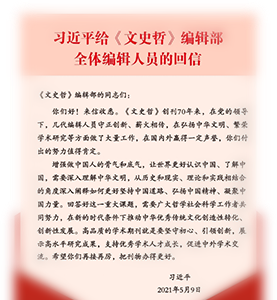近古诗学的“变”与“复” 查洪德
古人言:“诗道不出乎变复。变谓变古,复谓复古。”近古诗学的历史,既表现为“变”与“复”的消长,又呈现“变”与“弊”的交替。以这一独特视角梳理近古诗学的演变,审视其诗论主张,有利于我们清晰认识和把握近古诗学的历史,从中获取一些有益的启发。元明清三代,在这一问题上表现出不同的思维特点。宋人在拟古中求新变,至宋末诗弊已极。元人倡导“不二古今”救宋人之失。明人“复”与“变”各走极端,形成“诗必盛唐”与“各极其变”的对立,但“变”“复”同是困境思维,在困境中寻求诗歌发展的出路,同样都不成功。清人惩明人之失,抛弃极端思维,以为变与复“非二道”,走向“变”与“复”之融通,且强调“神而明之”,达到了新的理论高度。近代诗学和现代诗学也都可以看作是这一探讨在新形势下的延续,不管是“以旧风格含新意境”还是“用新精神作旧体诗”,都体现了“变”与“复”的思维与精神。这对当下诗歌之路的探索,具有借鉴意义。
The Changing and Retro Trends of Poetics in Late Imperial China Zha Hongde
The history of poetics in late imperial China manifested as both growth and decline between the changing and retro trends, and alternation between “change” and “drawback.” In the Yuan, Ming, and Qing Dynasties, there was different thinking about this problem. The Song poets pursued variation through imitating the classic style, and the poetic drawbacks had reached an extreme until the late Song Dynasty. The Yuan poets advocated that “the ancient is consistent with the present,” to save the drawbacks of the Song Dynasty. The Ming poets went to two extremes toward the changing and retro trends, thus formed contrary of “worshipping the Tang Dynasty on poetry” and “each making extreme change.” Yet the changing and the retro are both dilemma thought, so they were both unsuccessful in searching way out for poetry in such dilemma. The Qing poets learnt the lesson from the Ming poets, and they reached new theoretical height by discarding extreme thought, and moving toward integration of the changing and retro trends. Modern poetics could also be regarded as continuation of such discussion under new circumstances. Whether “containing new artistic conception in old style,” or “writing classical poem with new spirit,” both reflected the thought combining the changing and the retro. It is a reference for exploring the path of contemporary poetry.


